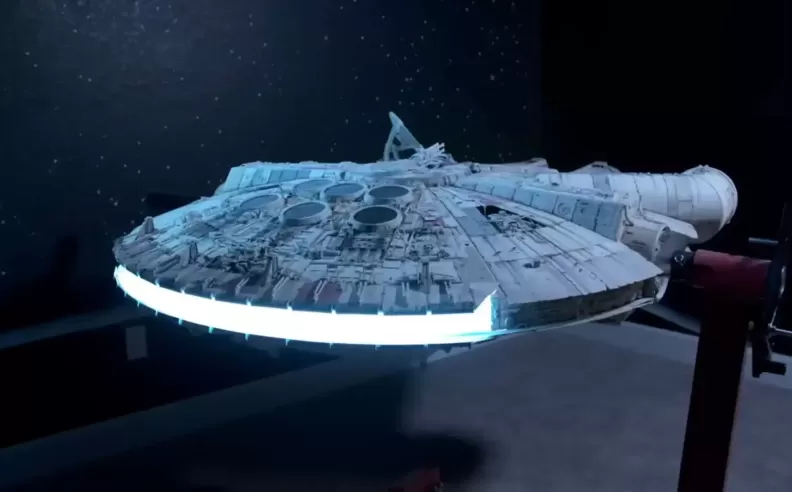
The Millennium Falcon, a spaceship synonymous with the Star Wars franchise, is one of the most iconic symbols of science fiction in film history. What many fans may not realize is that the original model of this legendary spacecraft, used in Star Wars: A New Hope (1977), was constructed using parts from real race car models, including pieces from Ferrari and McLaren. This unique approach of combining actual mechanical components with futuristic design elements gave the Falcon an unmatched level of detail and realism, transforming it into a masterpiece of movie magic. The use of race car parts not only enhanced the ship’s aesthetic but also connected the fictional world of Star Wars with real-world engineering.
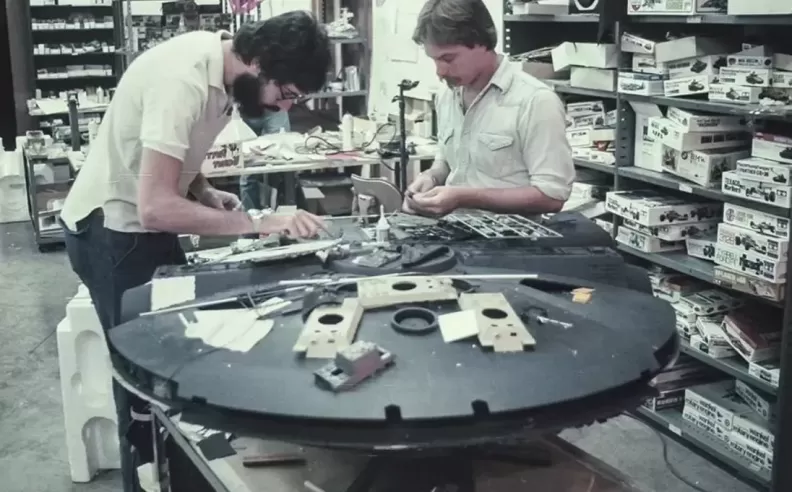
In creating the Millennium Falcon for A New Hope, the production team at Lucasfilm tapped into a creative solution to bring life to the ship: using parts from model race cars. This decision was both practical and ingenious. The Falcon’s construction included over 2,000 parts, many of which came from scale models of Ferrari, McLaren, and other high-performance cars. These components added complexity to the ship’s outer structure, giving it a mechanical feel that made it believable in a galaxy far, far away.
The design team strategically placed engine and transmission components in different areas of the ship. For instance, the bow of the Falcon, with its iconic mandibles, featured engine parts from a Tamiya Ferrari 312B model, instantly recognizable by the twelve cylinders. Other sections of the ship incorporated transmission housings from rotary engine kits, exhaust pipes, and even frame sections from a 1957 Chevy. By blending these real-world components into the ship’s hull, the designers created a vessel that appeared both rugged and functional, a crucial aspect of the Falcon’s appeal as a "fastest hunk of junk in the galaxy."
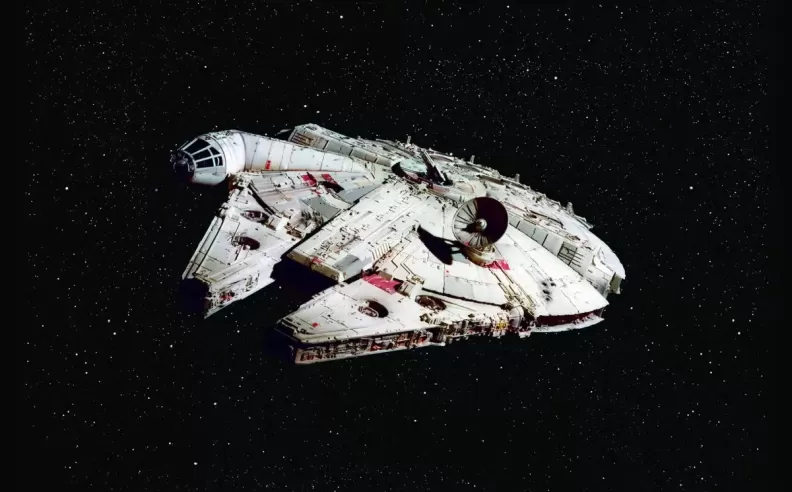
The use of such intricate model parts added a level of authenticity to the Millennium Falcon that might go unnoticed at first glance, but upon closer inspection, reveals a world of detail. For example, half of a Wankel rotary engine was cleverly placed on the ship’s exterior, while other areas featured exhaust manifolds and frame elements from classic cars. These details gave the Falcon a gritty, worn-in look, as if it had seen countless battles and repairs—a perfect fit for Han Solo’s well-used smuggling vessel.
The model makers didn't stop at car parts. They also sourced components from military vehicles and aircraft, including tank treads, landing gear, and aircraft wheels. Each piece was meticulously placed, ensuring that the Falcon looked like a product of both high-tech engineering and cobbled-together modifications. This blend of familiar and futuristic elements made the ship feel grounded in reality, allowing viewers to believe that such a vessel could exist in the Star Wars universe.
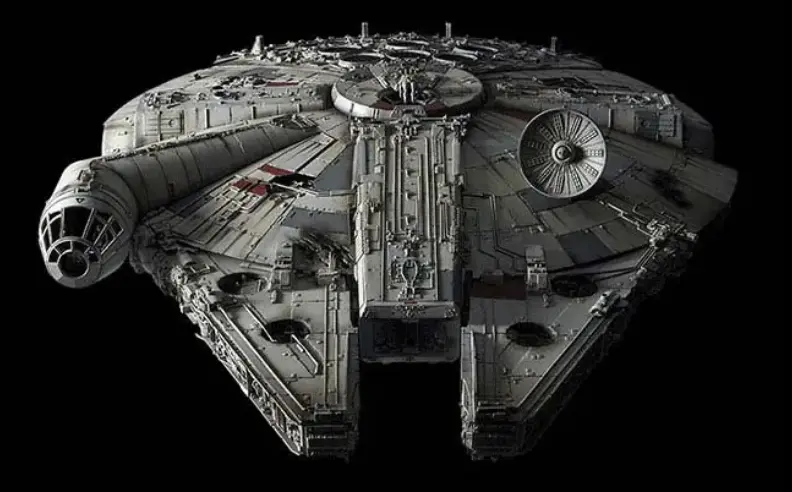
The decision to use race car parts in the construction of the Millennium Falcon had a significant impact on how audiences perceived the ship. By incorporating recognizable mechanical components, the design team created a vessel that looked functional and relatable, despite its fantastical setting. The use of real-world parts made the Falcon appear as if it had been built in a garage rather than a sterile sci-fi lab, giving it a charm and character that resonated with viewers.
For fans of both Star Wars and automotive enthusiasts, the inclusion of these parts added an extra layer of enjoyment. Once viewers learned that the Millennium Falcon featured components from iconic cars, it became almost like a treasure hunt—spotting the various elements hidden in plain sight on the ship’s exterior. This level of detail helped to elevate the Falcon from being just another spaceship to becoming a beloved icon in pop culture, with its design serving as a testament to the ingenuity of the film’s creators.
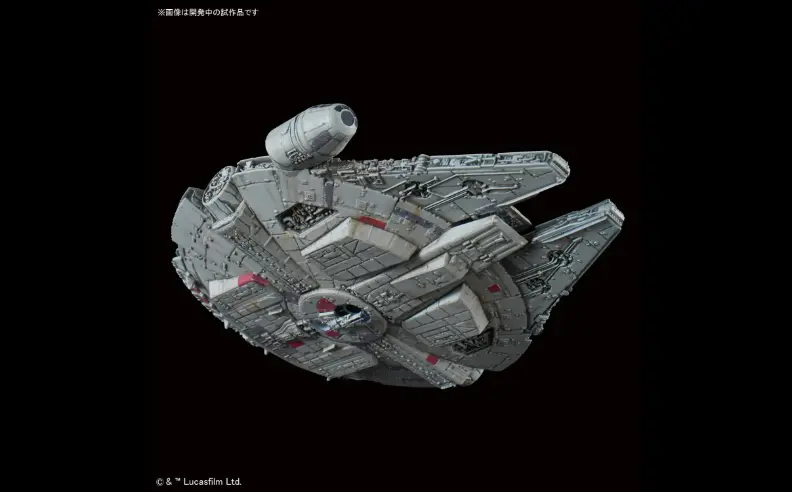
The Millennium Falcon’s use of race car parts is just one example of how the film industry has blended practical effects with imaginative design to create timeless movie magic. Even though the original large-scale model was only used for A New Hope, its legacy has endured throughout the Star Wars saga. In subsequent films, smaller models and updated CGI versions of the Falcon have carried on its distinctive look, but the original design remains iconic.
The combination of real-world parts and visionary design has set a standard for how filmmakers approach creating believable science fiction worlds. The Falcon’s rugged, lived-in appearance has influenced countless other spacecraft designs in film and television, reinforcing the idea that even in futuristic settings, machines should look functional and practical. The ship’s unique construction continues to inspire both filmmakers and fans, reminding us that innovation in design can come from the most unexpected places, such as a race car model kit.

Started my career in Automotive Journalism in 2015. Even though I'm a pharmacist, hanging around cars all the time has created a passion for the automotive industry since day 1.
